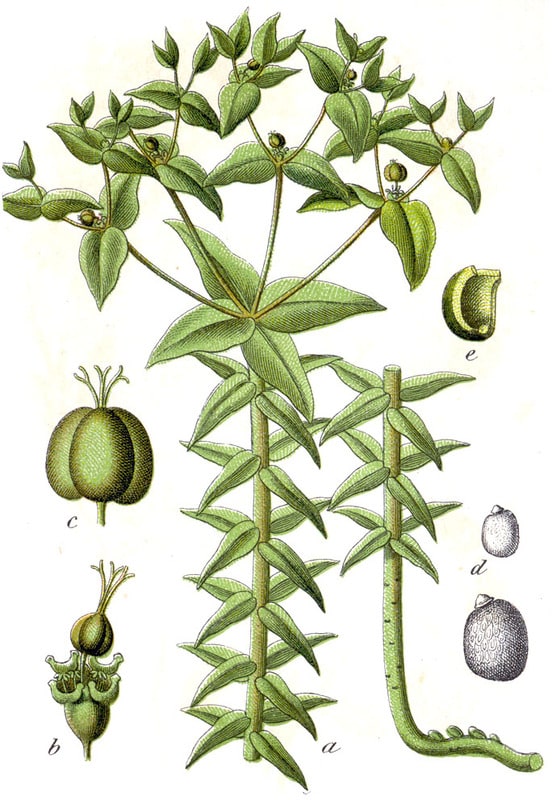Gopher Spurge, Mole Plant, Caper Spurge, Paper Spurge
Euphorbia lathyris

🌿 Morphology
🌞 Growing conditions
🌍 Origin and family
🌾 Uses
Warning: Despite the care taken in writing this sheet, it is essential to cross-reference sources before using or consuming any plant. When in doubt, consult a qualified professional
Permaculture uses
The seeds are reported to have a strong purgative and emetic effect and have been used to repel moles and gophers from gardens, though its efficacy is debated. The plant yields an oil that has been explored as a potential biofuel source. It is considered toxic and not typically used for human consumption. Caution is advised when handling the plant due to its irritant sap.
Botanical description
Euphorbia lathyris is an erect, biennial herb growing up to 1.5 meters tall. It has smooth, bluish-green stems and opposite, linear leaves that clasp the stem. The plant produces distinctive capsules containing three seeds. All parts of the plant contain a milky sap that is irritating to the skin and mucous membranes. The flowers are small, greenish, and inconspicuous, borne in cyathia typical of the Euphorbia genus. It grows well in full sun and well-drained soil.
Companion planting
Its reported repellent properties could be utilized as a border plant to deter certain pests from neighboring crops. However, it's essential to consider its potential allelopathic effects and its toxicity, which might negatively impact beneficial soil organisms or other plants.
Propagation methods
Propagation is typically done by seed. Seeds should be sown in the fall or early spring. Self-seeding is also common. Cuttings are not a reliable method of propagation.
History and traditions
Historically, Euphorbia lathyris has been used in traditional medicine as a purgative, though this use is now discouraged due to its toxicity. It has also been used as a folk remedy for various skin conditions, but again, caution is strongly advised. In some cultures, it was believed to repel moles and gophers from gardens.
Usage calendar
Flowering occurs typically from late spring to summer (May-August). Seed capsules mature in late summer and autumn (August-October). Seeds can be sown in autumn for spring germination or in early spring after a period of cold stratification. Pruning, if desired, should be done after flowering.
